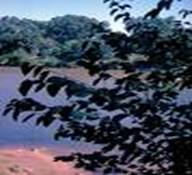| Kingdom | Plantae |
| Division | Magnoliophyta |
| Class | Magnoliophyta |
| Order | Rosales |
| Family | Ulmaceae |
| Genus | Ulmus |
| Species | U.fulva |
| Binomial name | Ulmus fulva |
Other Common Names:
The other common names for the Elm tree are Amerikan Karaagaci, Indian Elm, Moose Elm, Red Elm, Sweet Elm, Ulmus rubra, and Ulmus fulva.
History

Description

Range
The slippery-elm is a large tree, common to this country, especially in the western states. Geographically, this tree is found growing in central and southern North America - Maine to Florida, west to Texas and North Dakota.
Habitat
Its natural habitat is deep rich soil on the banks of streams and low rocky hillsides. The land should not be water-logged though. Slippery elm is generally seen in rich deep soils, often calcareous, on the banks of streams and low rocky hillsides.
Cultivation
Seed when sown in a cold frame as soon as it is ripe then it germinates within a few days. Stored seed does not germinate so well and should be sown in early spring and it requires 2 - 3 months stratification. The seed can also be harvested 'green' (when it has fully developed but before it dries on the tree) and sown immediately in a cold frame. It should germinate very quickly and will produce a larger plant by the end of the growing season. When they are large enough to handle, prick the seedlings out into individual pots and grow them on in the greenhouse for their first winter. Plant them out into their permanent positions in late spring or early summer, after the last expected frosts. Plants should not be allowed to grow for more than two years in a nursery bed since they form a tap root and will then move badly. Layering of suckers or coppiced shoots.
Flowering Season
The flowers which are sessile, in dense, lateral clusters, and appear before the leaves are in bloom from March to May.Pests and Diseases
Elms have become quite a rare sight in the UK and Europe since the outbreak of the Dutch Elm disease wiped out huge populations of these trees. Another important foliage disease is target leafspot which is caused by the fungus Cristulariella pryamidalis and is responsible for premature defoliation.
Parts Used

The inner bark is the most commonly used parts of the tree for its commercial and medicinal applications.
Medicinal Applications


• Slippery elm is also one of four herbs included in a popular therapy called essiac that is promoted for cancer treatment.
• Slippery elm has been used in Ayurvedic and Traditional Chinese Medicine for gastrointestinal symptoms including bloody diarrhea.
• Slippery elm is an excellent treatment for diarrhea, colitis and inflammation of the intestinal tract.
• It soothes the mucous membranes of the intestines, as well as the respiratory and urinary tracts.
• The herb works with the body to draw out impurities and toxins, assisting with the healing of all body parts.
• Nineteenth-century midwives used Slippery Elm to lubricate their hands when performing gynecological exams and the herb was also consumed the last few weeks of pregnancy to facilitate labour.
• The inner bark of slippery elm is used to treat gastritis, peptic ulcers, colitis and enteritis.
• The herb also has properties of alleviating cystitis and an inflammatory bladder.
• It is considered so safe that Slippery Elm can be added to baby food as a nutritive, and is also said to be good for babies who cannot digest milk.
• Slippery Elm is also beneficial in alleviating inflammation caused by arthritis and for soothing sore throats.
• Externally it is used as a poultice, ointment, wash, etc. for abscesses, all inflamed surfaces, boils, burns, chill blains, congestion, eruptions, gangrenous wounds, poison ivy and purulent ophthalmia.
Commercial Applications


• The bark has been used as a roofing material.
• It's a popular herbal ingredient in natural throat and cough lozenges.
• A tea-like beverage can be brewed from the inner bark.
• The boiled bark has been used for making matting, nets etc.
• Wood is used for fence posts, window sills, agricultural implements etc.
• It is used as a thickening agent in soups and added cereal flours in making bread.


In times of famine, early American settlers used it as a survival food. George Washington and his troops survived for several days on Slippery Elm gruel during the bitter winter at Valley Forge.
Traditionally the Slippery elm was burned to stop gossip. There are no specific magical uses associated with Slippery Elm, however it may be of great service when attending ceremonies that demand long hours of chanting and praying. The Choctaw and Iroquois tribes drink elm infusions in order to soothe menstrual problems. The tree essence balances the heart and energises the mind. Since it is under the dominion of the Capricorn sign it is believed that the elm tree is used for anti gossip and persuasion.